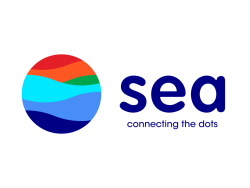There is a bomb waiting to go off in the global economy. The potential aftermath is potentially far more damaging than any other economic debacle in history.
| ---Recommended Link--- |
| BIG Gains 310%...452%...569% -- The Growth Your Portfolio Needs If you ever want a shot at retiring with millions in your account, then you need BIG winners. That's why THE LIST is our most anticipated report. It's jam-packed with timely growth picks that likely have huge gains just on the horizon. Click here to see THE LIST now. |
Fortunately, there are some stocks that are well-suited to weather, and even thrive, should the bomb trigger. �
This article will reveal three of these "bomb-proof" stocks and provide a plan on how to best add them to your portfolio. �
First, let's take a closer look at this impending crisis.
If you haven't already guessed it, I am referencing the $14 trillion of debt added to corporate balance sheets since the 2008 financial crisis.
We are truly living in the age of the massive debt. Everyone from Elon Musk to the average consumer has funded their economic growth via debt. �
Presently, the debt of non-financial companies makes up an astounding 74% of the U.S. Gross Domestic Product (GDP). The latest figures indicate that debt is growing faster than earnings, and that is very concerning!
The corporate debt crisis was first fueled by central banks flooding the markets with easy cash, which led to investors following suit. As long as the yield is decent, investors throw money at nearly anything. Now, with interest rates clicking higher for the first time in a decade, the era of easy cash may soon end. Companies that depend on the easy money for growth will quickly implode when the faucet is turned off.
Bloomberg published a study revealing that 69 global companies have increased their debt load by over 50% since 2013. These debt trojans have a minimum of $5 billion in debt on their balance sheets. The study said the total amount of new debt is over $1 trillion with the majority rated as junk and due within the next seven years. Just imagine the possible carnage should the dominoes start to fall!
2018 shows no sign of this trend abating. Only in the last year and a half, institutional investors have added $1.6 trillion of leveraged loans.
Just two examples of these extreme debt kings are SoftBank Group and Tesla. SoftBank has a nearly unimaginable $149 billion of debt on its balance sheet. Tesla is sitting on debt loans of $10 billion causing Bloomberg to refer to Elon Musk as a "Junk Debt Titan."
Remember, as the economic cycle moves to higher interest rates, the debt will only become costlier, potentially resulting in the default of significant companies. �
How can investors protect themselves and even thrive should the debt bomb implode?
The first thing is to check the debt load of your holdings. Do your stocks fit the picture of a potential debt bomb? If so, consider taking profits now before it becomes too late. With thousands of stocks having substantial upside potential, there is no need to hang onto debt dangerous stocks in these possible final innings of easy money.
Investing in companies with steady, reliable cash flow is one key to avoiding debt bombs. Cash flow enables a company to service its existing debt, as well as pay down debt.� Also, cash hoards are another sign that the company will survive an economic debt bomb. �
Here are three companies that should thrive despite the impending economic debt bomb.
1. Equity Commonwealth (NYSE: EQC)
It may be surprising to find a real estate investment trust (REIT) on this list, but Sam Zell's investment vehicle is preparing itself for a possible debt bomb. Zell's ability to foresee economic trends has built him great wealth. Now, he is selling EQC's holdings to create a cash hoard ready to deploy when debt causes real estate prices to plunge again. �
Presently, Equity Commonwealth has $2 billion in cash after taking into account $700 million in debt. Unlike most other REITs, Zell is in the catbird seat should the market implode. �
Assuming that he is wrong about the real estate market pulling back, the cash will likely merely return to the shareholders.� �
What an incredible opportunity!� I am a huge fan of Sam Zell and think he is right on with how EQC is being managed. �
Right now, the shares are sitting on support at the 50-day simple moving average. Getting long now in the $31.00 zone with a target price of $43.00 per share and initial stops set at $29.93 makes investment sense. �
2. Graco (NYSE: GGG)
This industrial equipment designer/manufacturer is ideally suited to thrive whether or not the debt bomb ignites. �
The company's net debt to earnings before interest, taxes, depreciation, and amortization (EBITDA) is a desirable 0.4% as its steady free cash flow expanded by 31% last year. At the same time, Graco's products require frequent updating, and the company aggressively pursues new sources of revenue assuring the cash will continue.
The shares just plunged over 10% but quickly recovered, proving the resiliency of the stock. Buying in the $45.00 per share zone with stops suggested at $42.77 per share and a target price of $55.00 per share is the proposed play. �
3. Electronic Arts (Nasdaq: EA)
A video game publisher with over $5 billion in cash and short-term investments combined with growing free cash flow. Free cash flow soared by over 25% to $1.6 billion in its last fiscal year creating a nearly impenetrable fortress in the face of the debt-laden economy.
Shares just plunged into the low $130.00 zone setting up a great buy opportunity.� Enter longs in the $133.00 per share zone with a $162.00 per share target price.� Initial stops are suggested at $121.17 per share
Risks To Consider: No matter how the debt bomb proof a company may appear, anything can and does happen in the stock market.� Always use stops and position size wisely when investing.
Action To Take: Consider adding one or more of the above stocks to your portfolio.
Editor's Note: Back in December 2009, a small group of investors started a brand-new income program called The Dividend Trifecta. They've pulled in $113,922 in steady income over the years... and the number gets bigger every month. Some are making $1,900 per month... all thanks to The Dividend Trifecta. Click here to learn more about how investors just like you are cashing these checks every month.
 Analysts expect Acxiom Co. (NASDAQ:ACXM) to announce sales of $219.62 million for the current quarter, according to Zacks Investment Research. Two analysts have issued estimates for Acxiom’s earnings. The highest sales estimate is $219.94 million and the lowest is $219.30 million. Acxiom reported sales of $212.51 million during the same quarter last year, which indicates a positive year over year growth rate of 3.3%. The business is expected to issue its next quarterly earnings report on Thursday, August 2nd.
Analysts expect Acxiom Co. (NASDAQ:ACXM) to announce sales of $219.62 million for the current quarter, according to Zacks Investment Research. Two analysts have issued estimates for Acxiom’s earnings. The highest sales estimate is $219.94 million and the lowest is $219.30 million. Acxiom reported sales of $212.51 million during the same quarter last year, which indicates a positive year over year growth rate of 3.3%. The business is expected to issue its next quarterly earnings report on Thursday, August 2nd. Source: VEX Robotics via Flickr
Source: VEX Robotics via Flickr  The fast-casual restaurant will not be reporting until after the market closes on Wednesday but the stock was upgraded by Zacks Investment Research early on Monday from a “hold” rating to a “buy” rating in a research report that the company sent to investors in the morning. Analysts from the firm have a price rating of $14 on the stock, which is currently selling at around $12.70 per share.
The fast-casual restaurant will not be reporting until after the market closes on Wednesday but the stock was upgraded by Zacks Investment Research early on Monday from a “hold” rating to a “buy” rating in a research report that the company sent to investors in the morning. Analysts from the firm have a price rating of $14 on the stock, which is currently selling at around $12.70 per share.

 HSBC (NYSE:HSBC) was upgraded by stock analysts at JPMorgan Chase & Co. from a “neutral” rating to an “overweight” rating in a research note issued to investors on Tuesday, The Fly reports.
HSBC (NYSE:HSBC) was upgraded by stock analysts at JPMorgan Chase & Co. from a “neutral” rating to an “overweight” rating in a research note issued to investors on Tuesday, The Fly reports.
 Acquisitions are going to be a key driver of CAG's future growth.
Acquisitions are going to be a key driver of CAG's future growth. Sea Limited engages in the digital entertainment, e-commerce, and digital financial service businesses in the Greater Southeast Asia. The company operates through three segments: Digital Entertainment, E-commerce and Digital Financial services. It provides Garena digital entertainment platform for users to access mobile and PC online games, and eSports operations; and access to other entertainment content, such as live streaming of online gameplay and social features. The company also operates Shopee e-commerce platform, a third-party marketplace that connects buyers and sellers through the Shopee mobile app and Websites. In addition, it offers digital financial services to individuals and businesses, including e-wallet and payment services through the AirPay mobile app and AirPay counter applications on mobile phones or computers; and payment processing services for Shopee, as well as acts as a payment processing platform for Garena's prepaid cards. The company was formerly known as Garena Interactive Holding Limited and changed its name to Sea Limited in April 2017. Sea Limited was founded in 2009 and is headquartered in Singapore.
Sea Limited engages in the digital entertainment, e-commerce, and digital financial service businesses in the Greater Southeast Asia. The company operates through three segments: Digital Entertainment, E-commerce and Digital Financial services. It provides Garena digital entertainment platform for users to access mobile and PC online games, and eSports operations; and access to other entertainment content, such as live streaming of online gameplay and social features. The company also operates Shopee e-commerce platform, a third-party marketplace that connects buyers and sellers through the Shopee mobile app and Websites. In addition, it offers digital financial services to individuals and businesses, including e-wallet and payment services through the AirPay mobile app and AirPay counter applications on mobile phones or computers; and payment processing services for Shopee, as well as acts as a payment processing platform for Garena's prepaid cards. The company was formerly known as Garena Interactive Holding Limited and changed its name to Sea Limited in April 2017. Sea Limited was founded in 2009 and is headquartered in Singapore. Tencent Holdings Limited, an investment holding company, provides Internet value-added services (VAS) and online advertising services in Mainland China, Hong Kong, North America, Europe, other Asian countries, and internationally. The company operates through VAS, Online Advertising, and Others segments. It offers online games, community VAS, and applications across various online platforms; online advertising services, such as delivery of pay-for-click, pay-for-download, etc., as well as display based advertising; and payment related, cloud, and other services for individual and corporate users. The company also develops software; develops and operates online games; and provides information technology, asset management, online literature, and online music entertainment services. Tencent Holdings Limited was founded in 1998 and is headquartered in Shenzhen, the People's Republic of China.
Tencent Holdings Limited, an investment holding company, provides Internet value-added services (VAS) and online advertising services in Mainland China, Hong Kong, North America, Europe, other Asian countries, and internationally. The company operates through VAS, Online Advertising, and Others segments. It offers online games, community VAS, and applications across various online platforms; online advertising services, such as delivery of pay-for-click, pay-for-download, etc., as well as display based advertising; and payment related, cloud, and other services for individual and corporate users. The company also develops software; develops and operates online games; and provides information technology, asset management, online literature, and online music entertainment services. Tencent Holdings Limited was founded in 1998 and is headquartered in Shenzhen, the People's Republic of China.
 Shares of Grand Canyon Education Inc (NASDAQ:LOPE) have received a consensus rating of “Buy” from the seven research firms that are covering the company, MarketBeat.com reports. Seven research analysts have rated the stock with a buy recommendation. The average 12-month price target among brokers that have covered the stock in the last year is $109.75.
Shares of Grand Canyon Education Inc (NASDAQ:LOPE) have received a consensus rating of “Buy” from the seven research firms that are covering the company, MarketBeat.com reports. Seven research analysts have rated the stock with a buy recommendation. The average 12-month price target among brokers that have covered the stock in the last year is $109.75.  Twin Tree Management LP trimmed its holdings in shares of U.S. Bancorp (NYSE:USB) by 89.9% in the first quarter, according to the company in its most recent filing with the Securities and Exchange Commission (SEC). The institutional investor owned 2,301 shares of the financial services provider’s stock after selling 20,453 shares during the period. Twin Tree Management LP’s holdings in U.S. Bancorp were worth $116,000 as of its most recent SEC filing.
Twin Tree Management LP trimmed its holdings in shares of U.S. Bancorp (NYSE:USB) by 89.9% in the first quarter, according to the company in its most recent filing with the Securities and Exchange Commission (SEC). The institutional investor owned 2,301 shares of the financial services provider’s stock after selling 20,453 shares during the period. Twin Tree Management LP’s holdings in U.S. Bancorp were worth $116,000 as of its most recent SEC filing. 